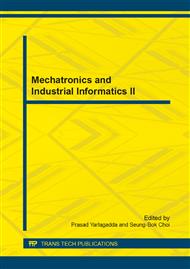p.669
p.674
p.678
p.682
p.687
p.692
p.696
p.700
p.704
Unbalanced Power Allocation Method to the Research of the Influence of the Power System Trend
Abstract:
After the disturbance of the power system, all generators of the system will react the disturb and adjust the output. All unbalanced power in the traditional method of trend fully will be assumed by the balancing bus, obviously do not conform to the actual operation situation. Dynamic power flow calculation can effectively deal with this problem, the current calculation method of the unbalanced power distribution exist two kinds of thinking:based on moment of inertia of the generator and based on the frequency characteristic coefficient of the generator . Here, this paper state the two methods of distribution , through analysis and comparison ,use case simulation verify the influence of the different methods of distribution on the system steady trend.
Info:
Periodical:
Pages:
687-691
Citation:
Online since:
July 2014
Authors:
Price:
Сopyright:
© 2014 Trans Tech Publications Ltd. All Rights Reserved
Share:
Citation:


